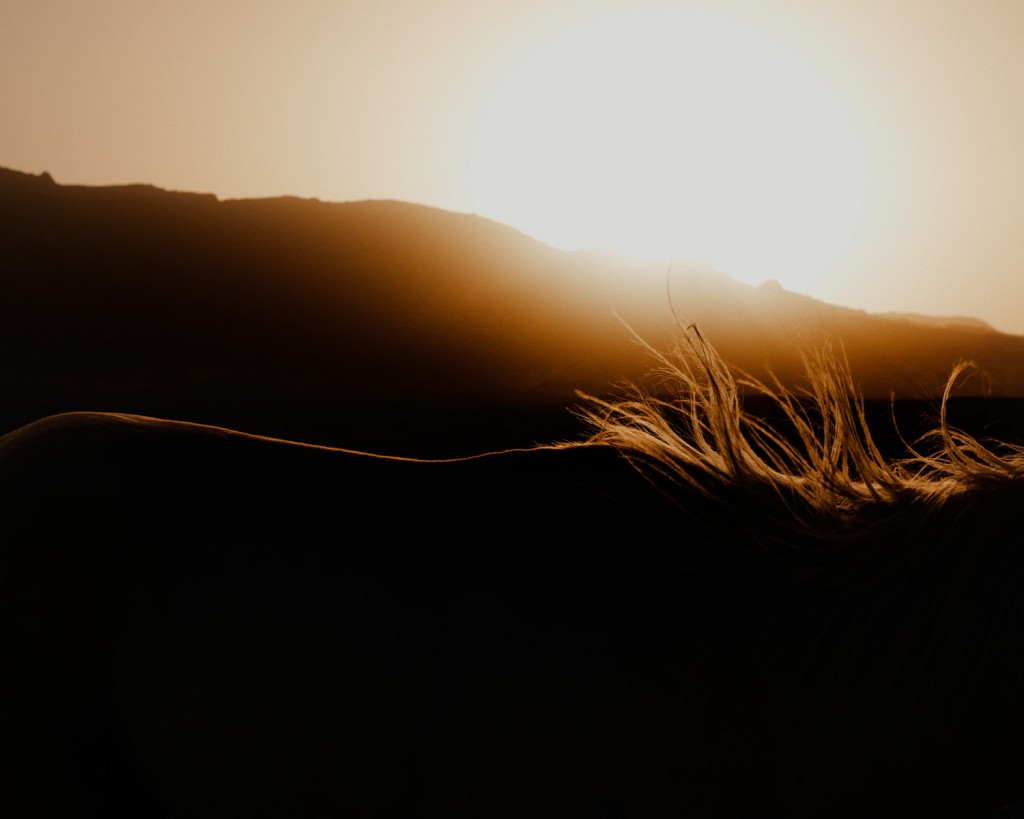
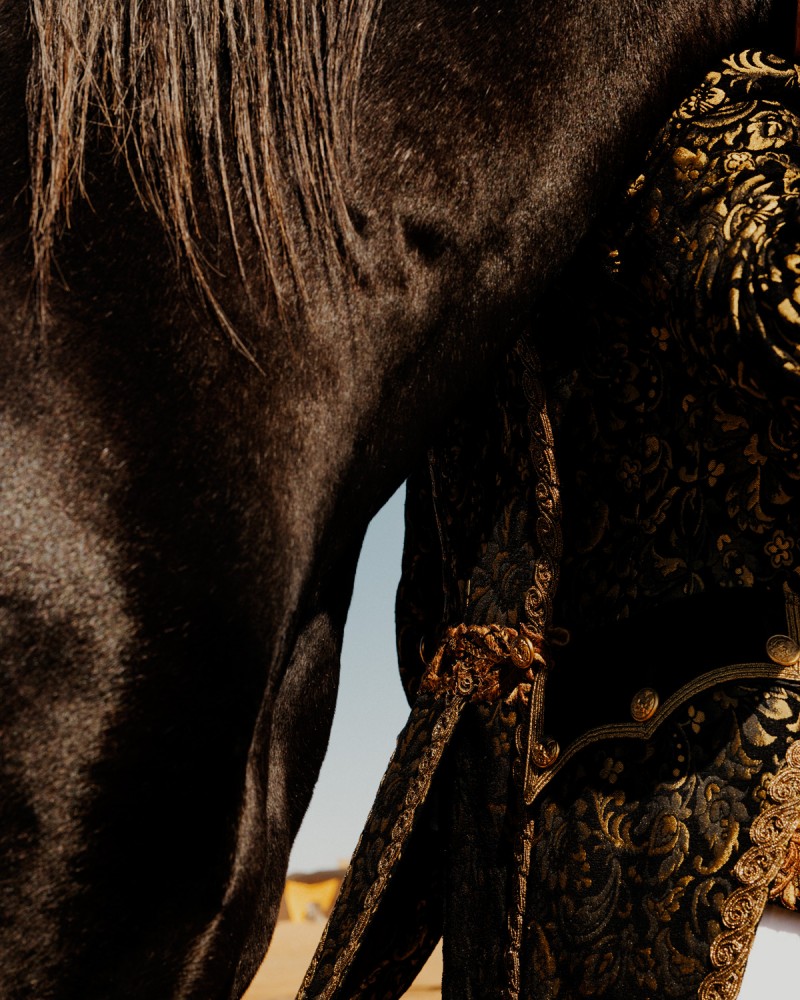
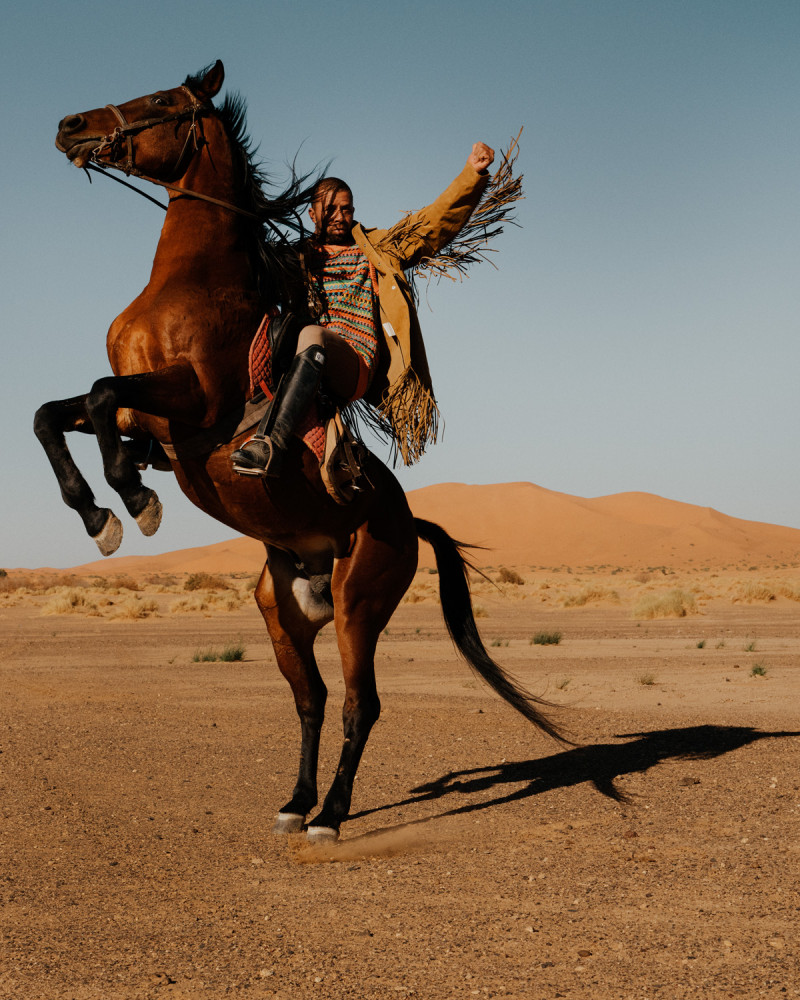
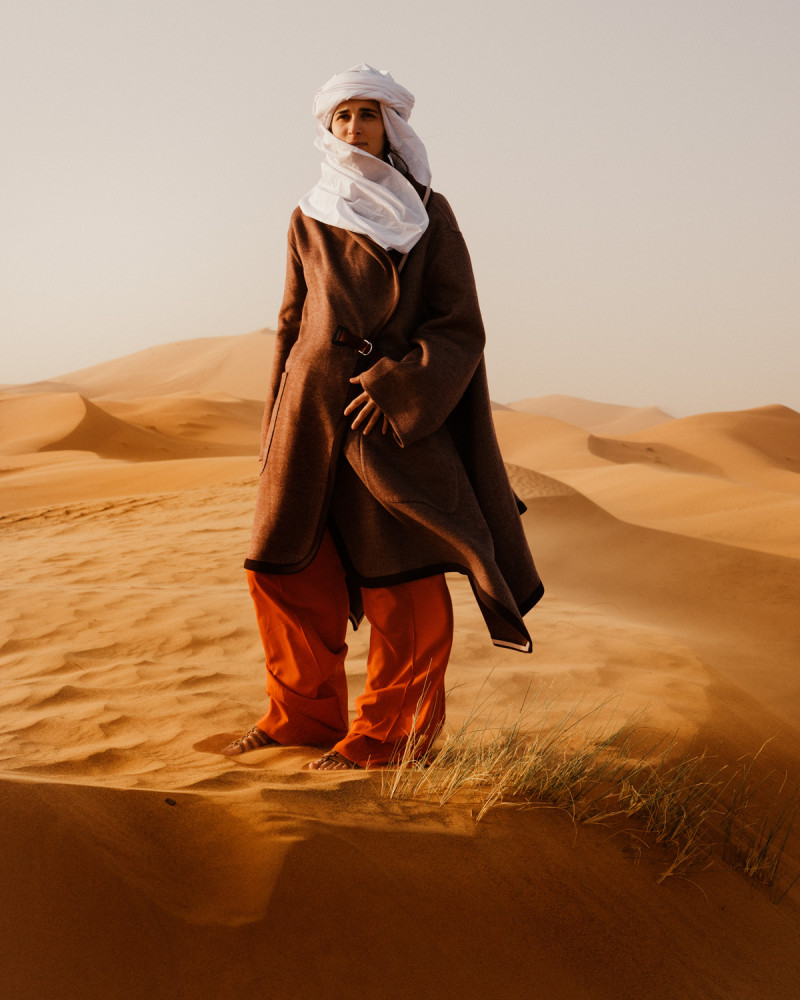
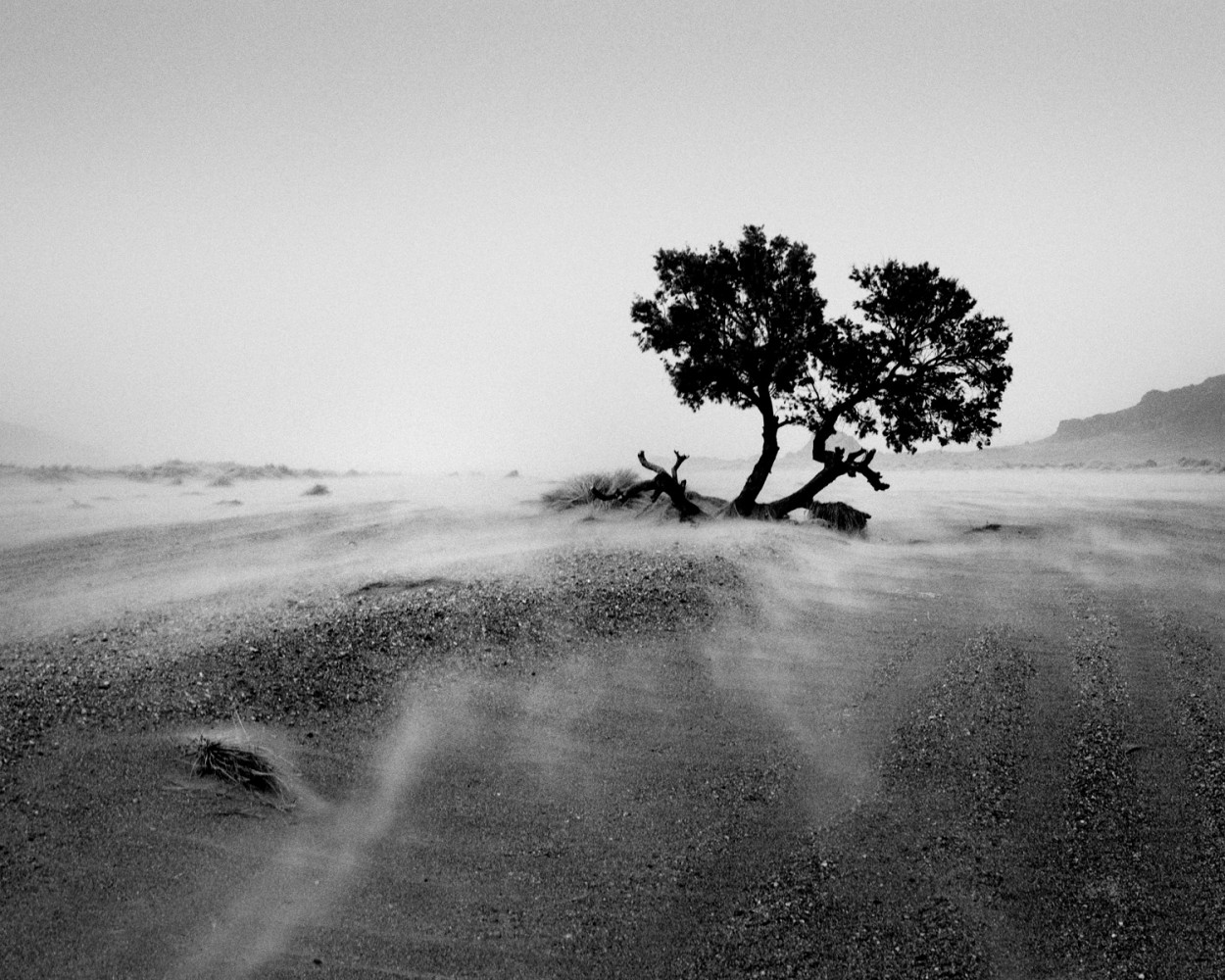
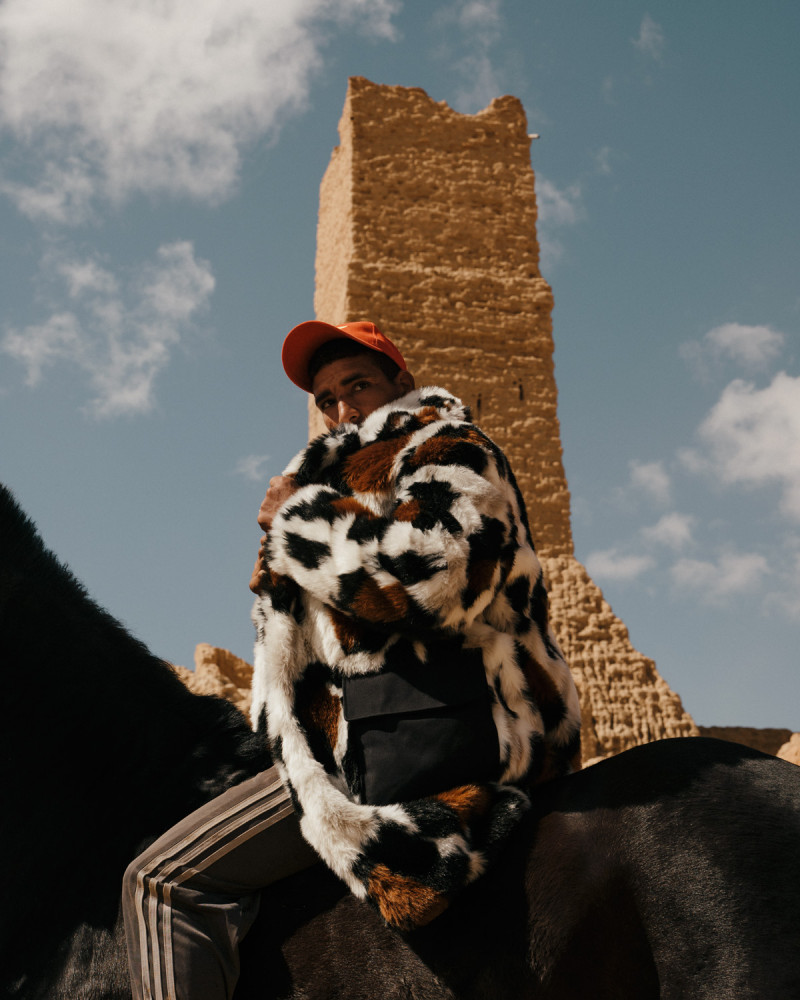
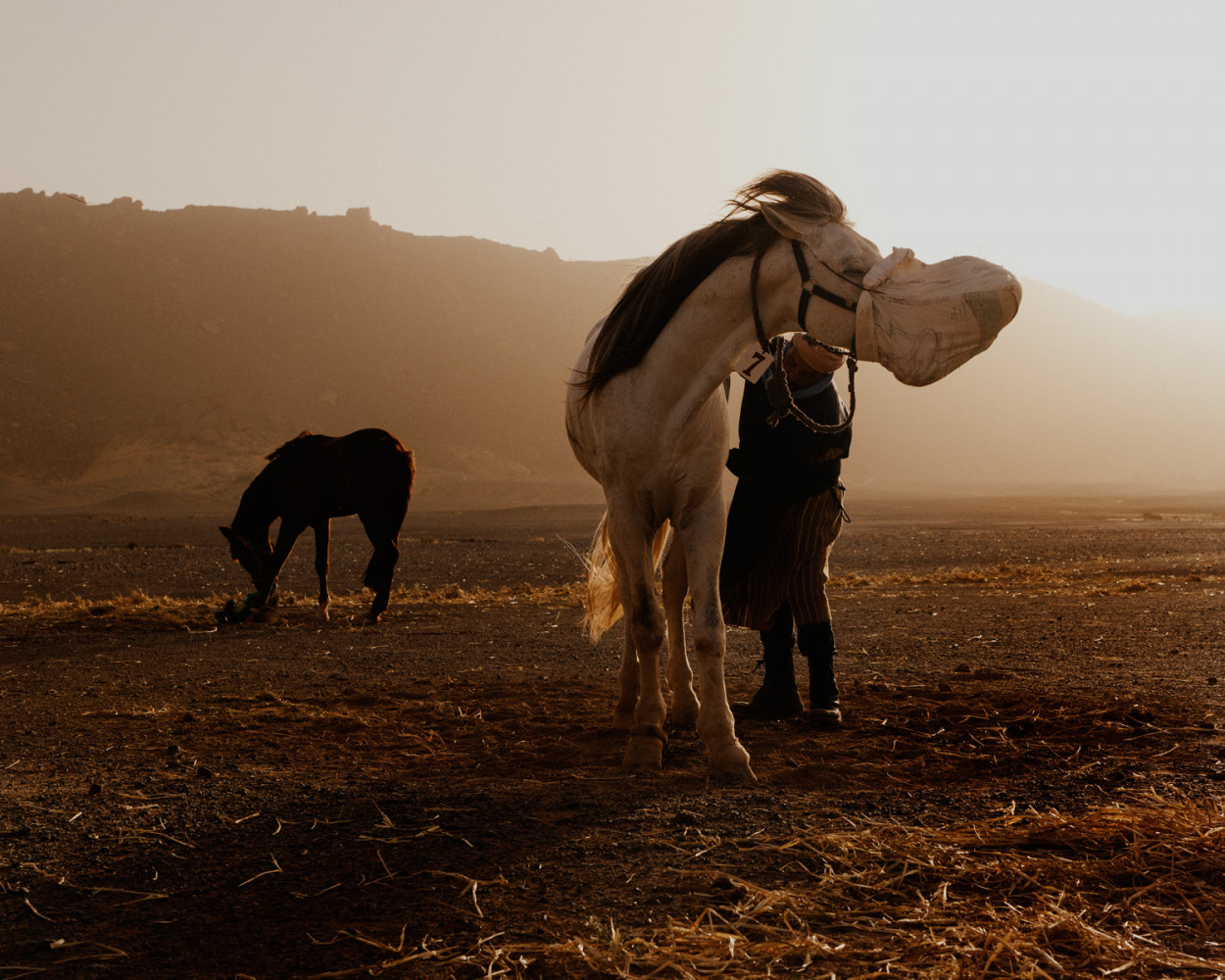
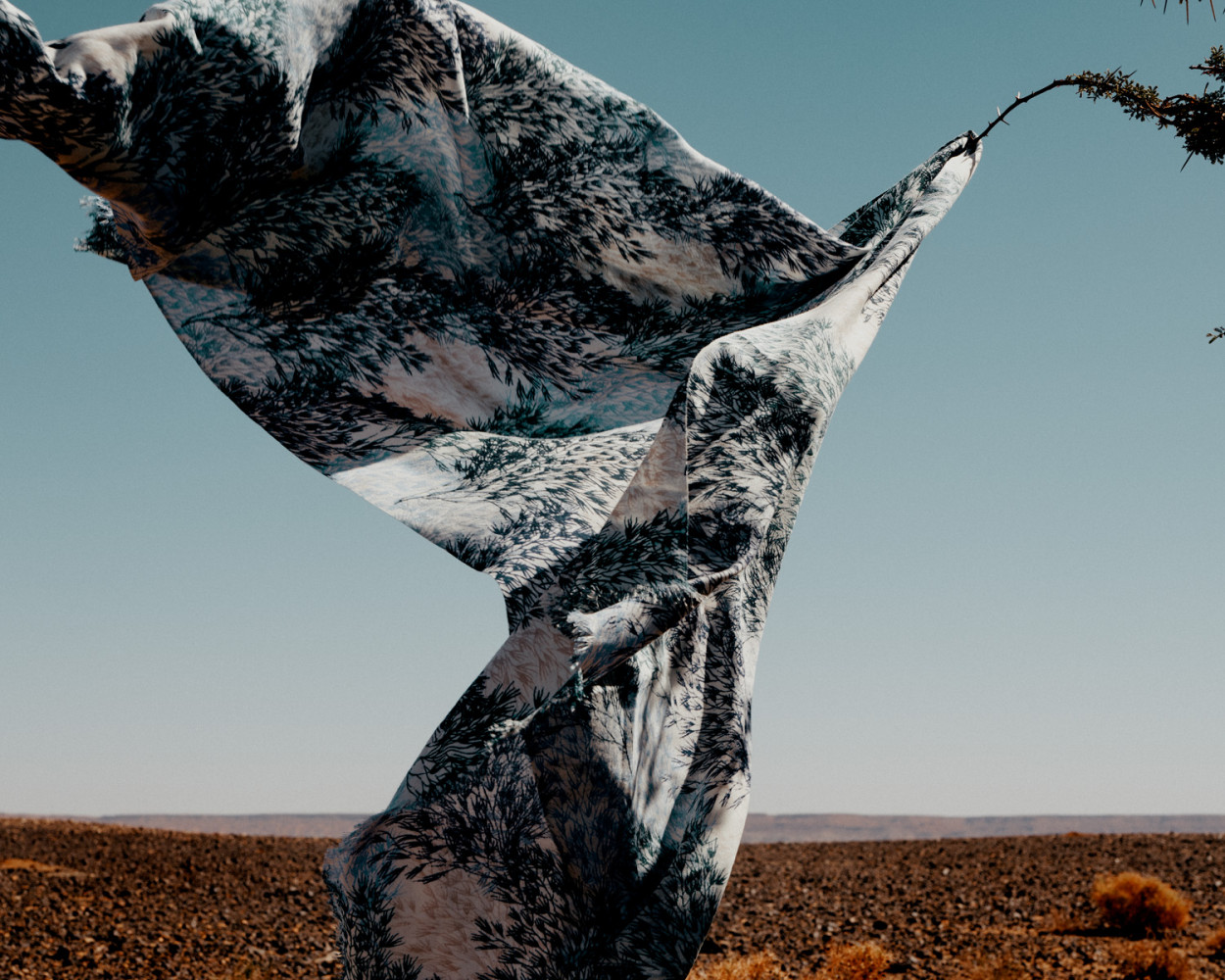
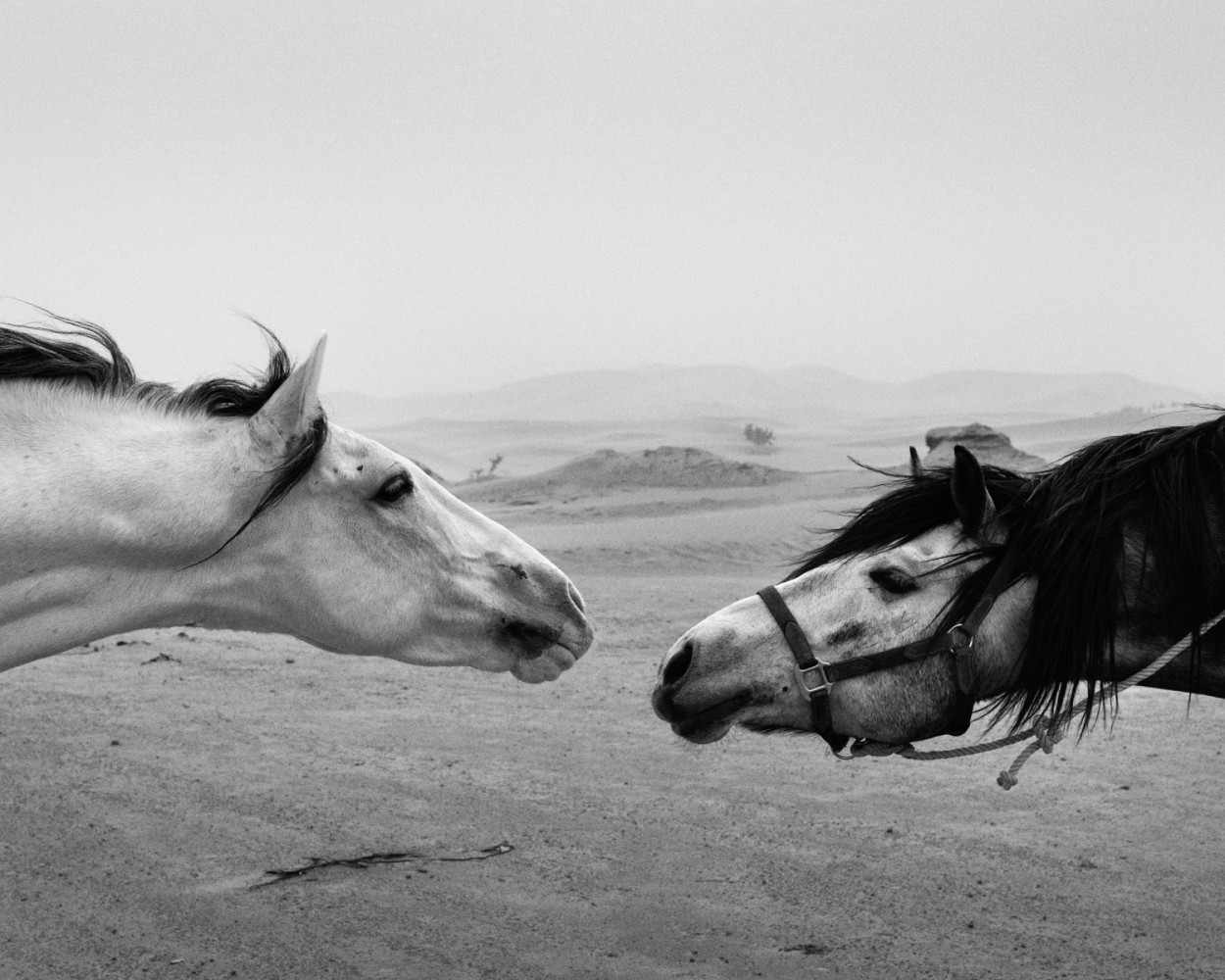
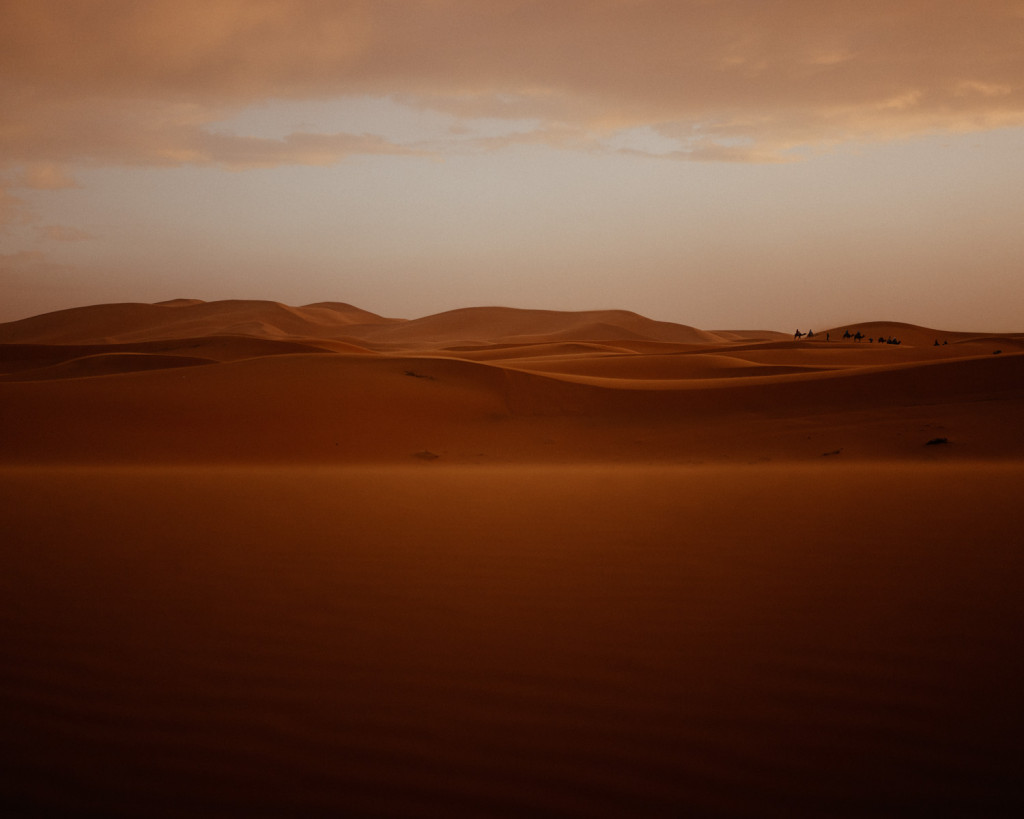
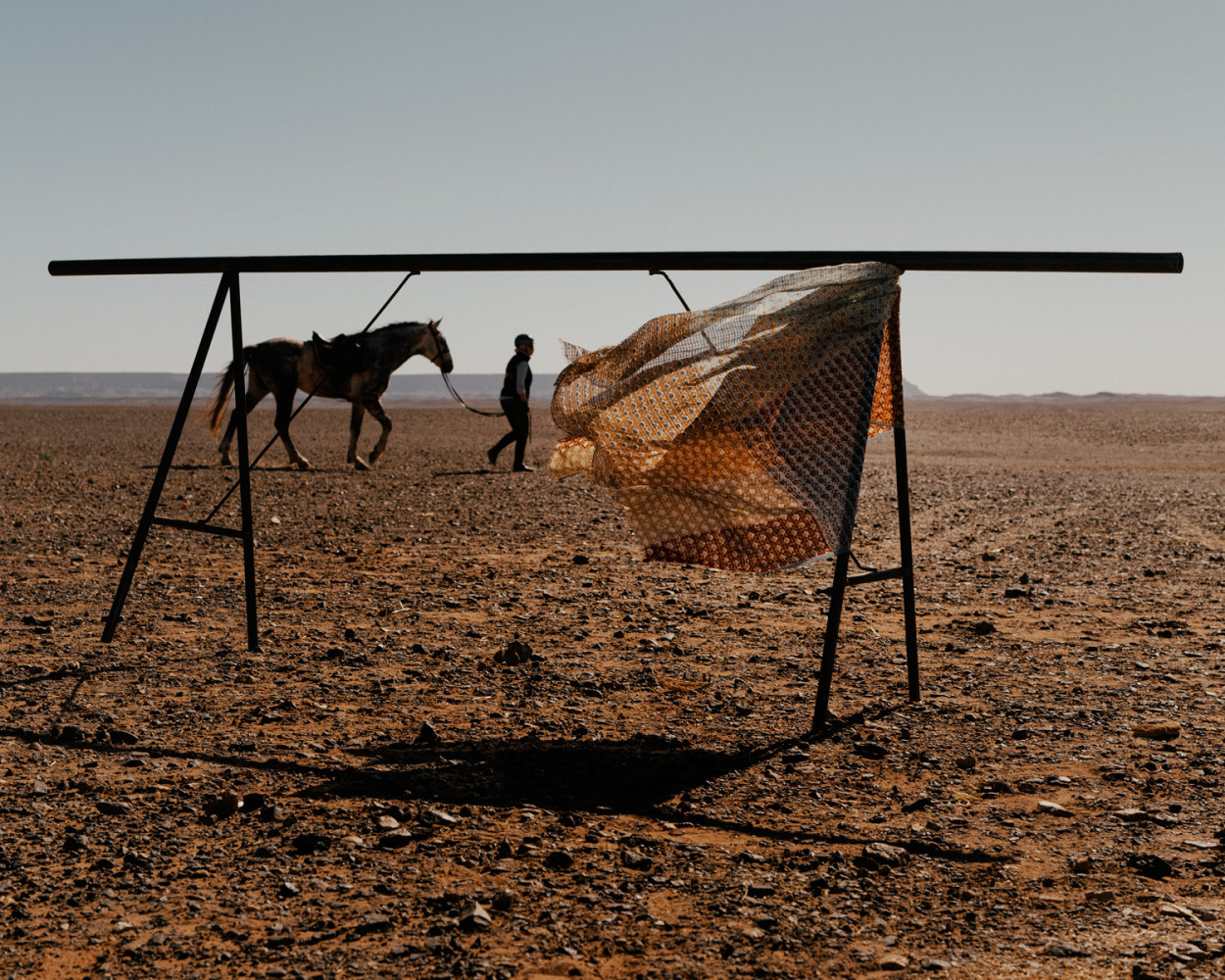
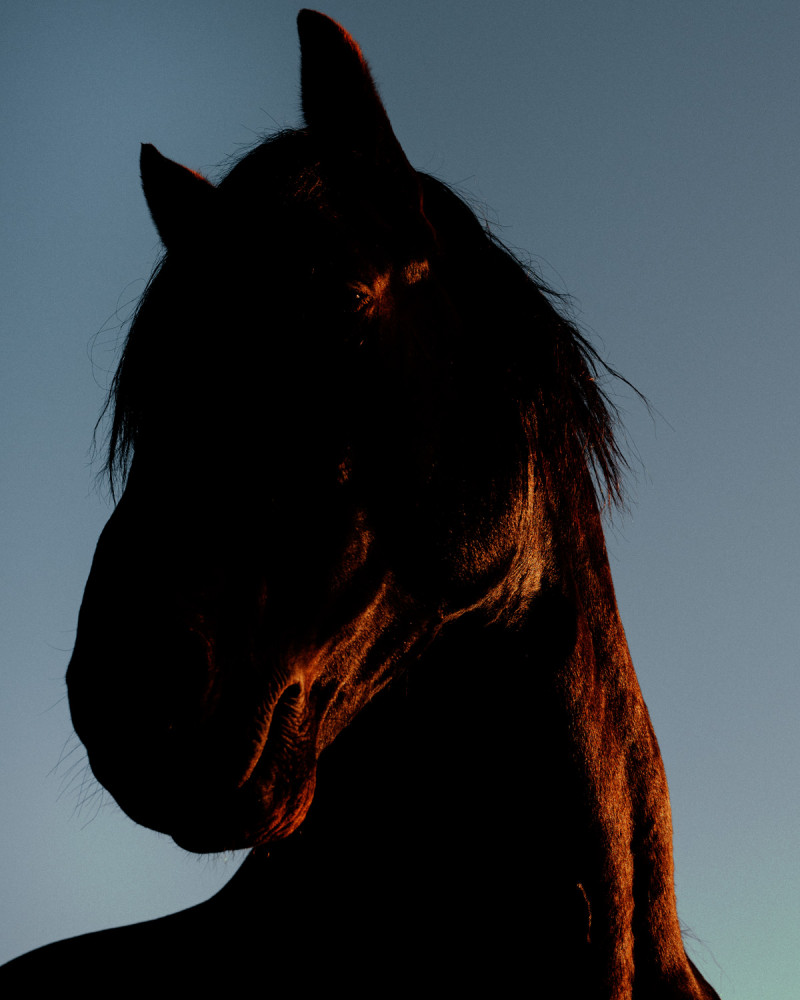
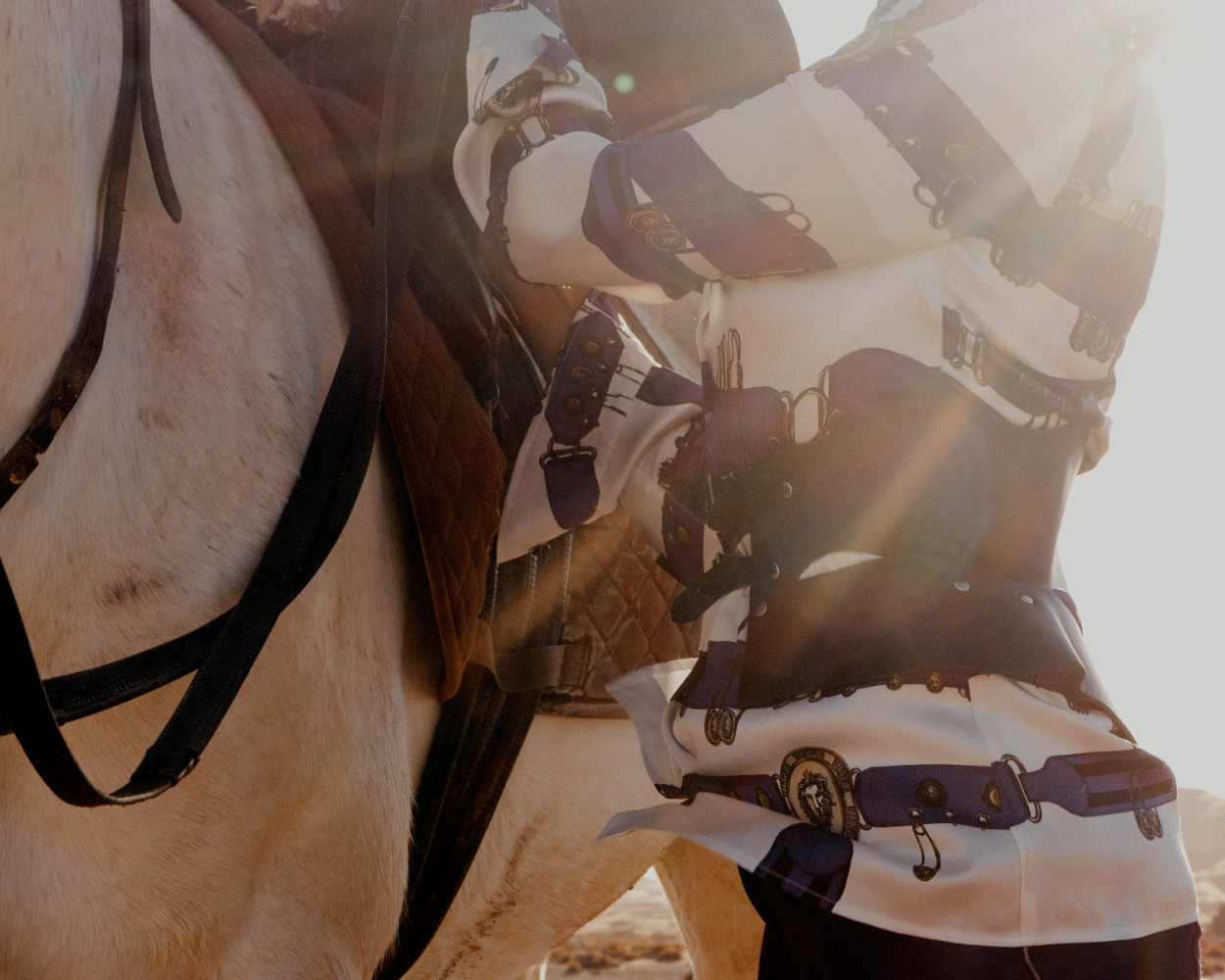
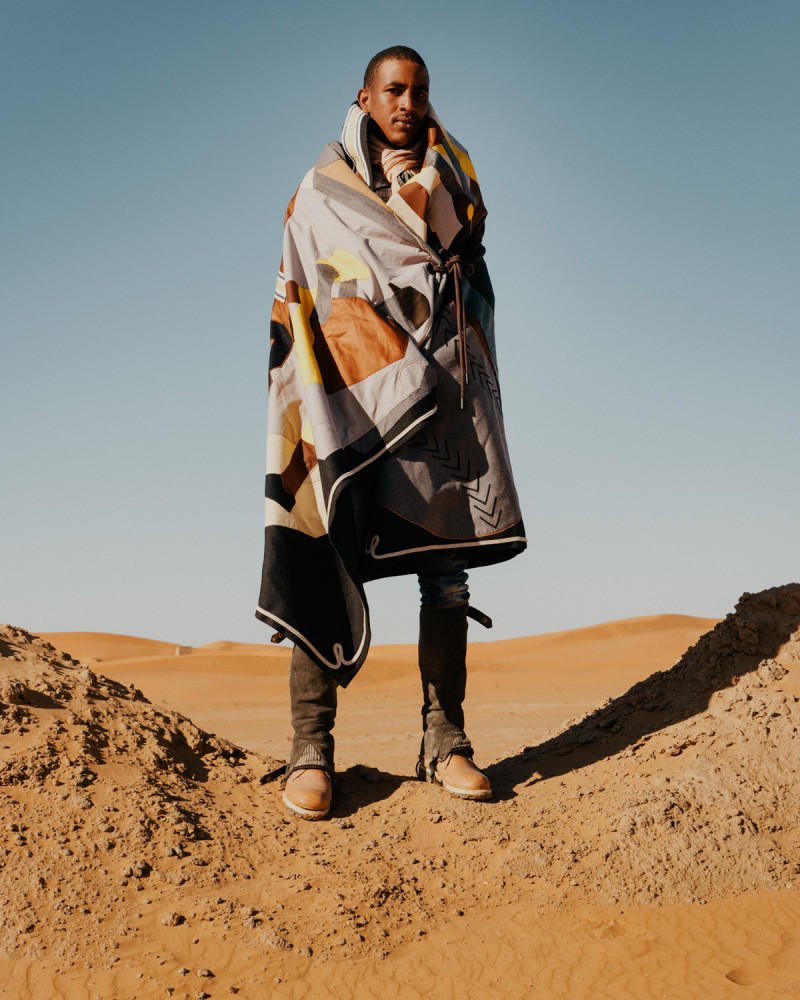
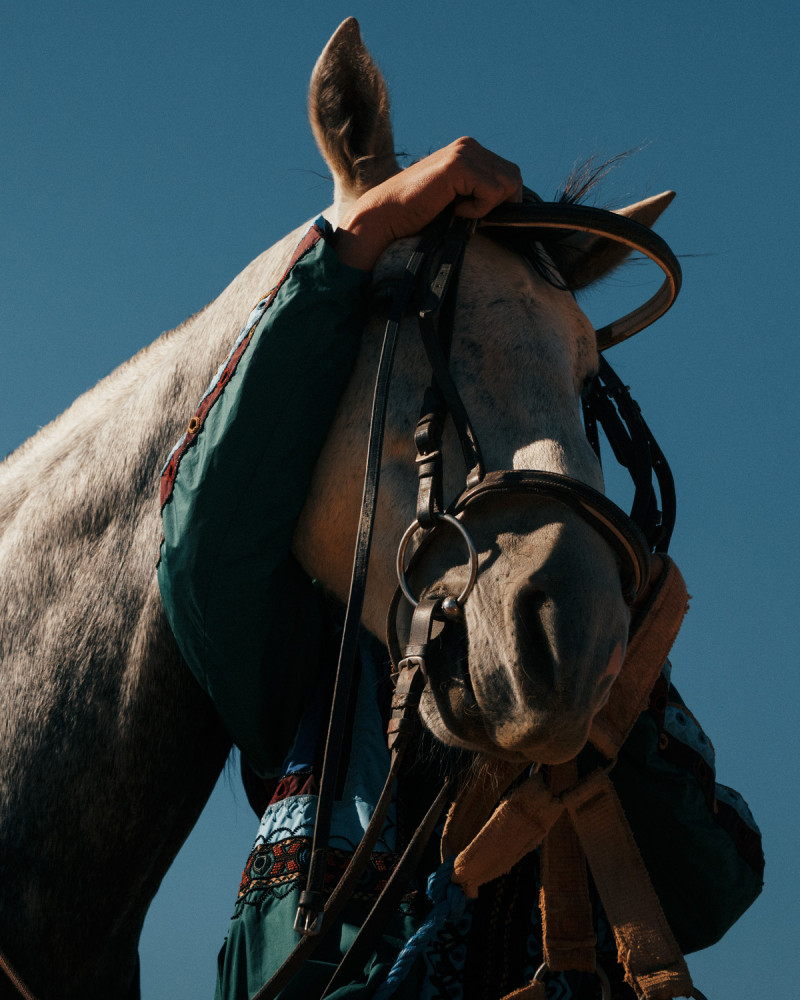
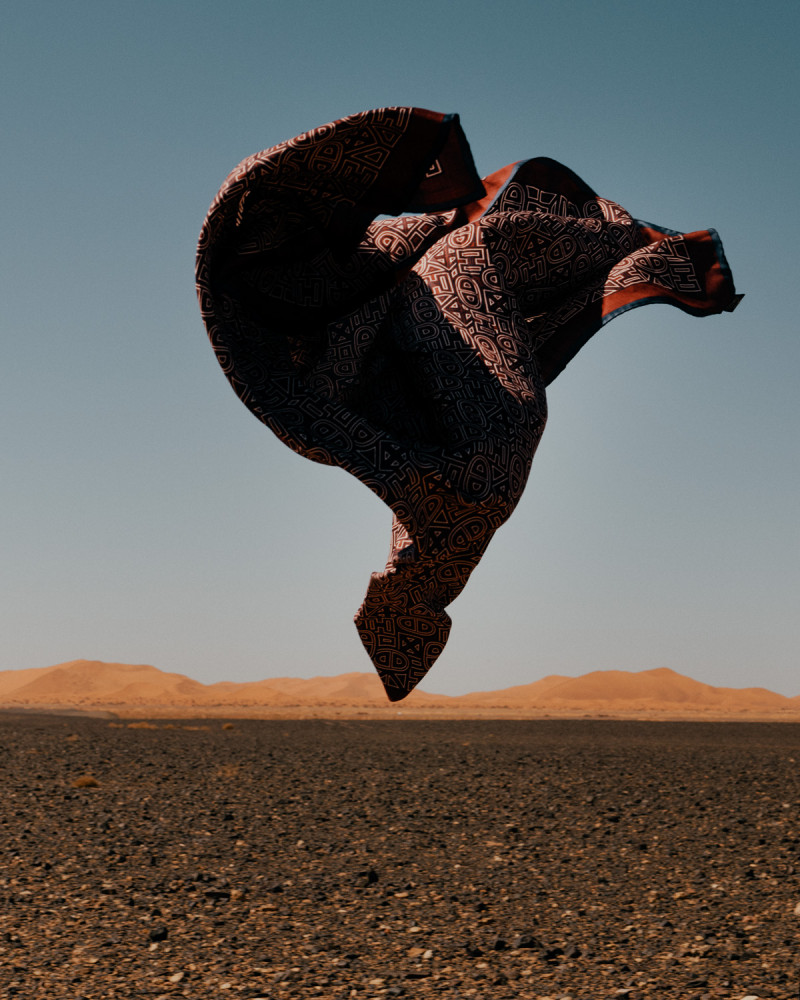
















INTERVIEW
Cédric Viollet
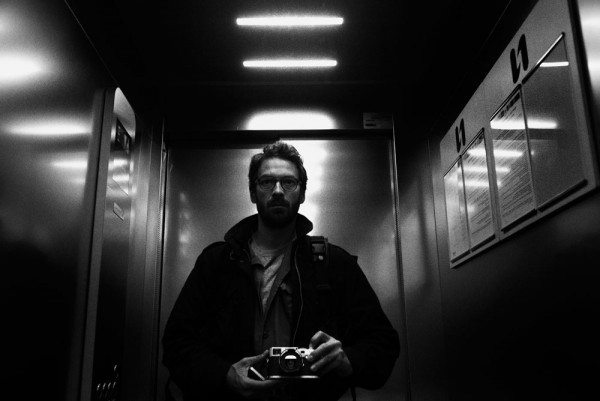
Photography: Cédric Viollet Camera: Leica SL with Summilux-SL 50 f/1.4 ASPH.
Cédric Viollet describes his visual language as a documentary-style approach. The same aesthetic also informs his fashion work, in which portraits alternate with landscape scenes and provocative stills. For this series, created during the Gallops of Morocco race, the photographer decided against using any models, assistants, or preconceived locations. Instead, he simply worked with whatever the moment presented.
How did the Gallops of Morocco project come about?
Gallops of Morocco is a week-long equestrian race in which riders cover a distance of 200 kilometres through the Moroccan desert. I was originally commissioned to document the event itself, which was being held for the second time. However, because I’m acquainted with the magazine’s editors, I was also given an additional assignment: to orchestrate images for a luxury goods collection whenever there were breaks in the race.
What was the difference between this project and a regular fashion shoot?
Usually with a fashion shoot, everything is consciously formulated: the models, the setting, the light. For this story, I worked with the conditions and protagonists that I encountered on location. Fashion photographers usually have several assistants and a lot of time to prepare. All I had with me was a stylist and a trunk full of luxury clothing.
What made the magazine decide that you’d be the right person for this job?
Because of my beginnings as a skateboard photographer, I know exactly what it is like to work in a very self-reliant manner whilst having to deal with adversities like the weather, the police or surly passers-by. Also, as a skateboard photographer you need to be quick and work with whatever outdoor light is available at any given moment. This has definitely made me more capable of dealing with the daily sandstorms, burning heat and general chaos of the desert. For other details, like predicting the direction of the winds or dealing with the erratic Moroccan gusts, my many years as a surfer stood me in good stead.
This was your first time working with the Leica SL. Did you bring any other cameras?
No, the Leica SL was the only camera I took with me. I also ended up working with just one lens, the Summilux-SL 50mm f/1.4 Asph, to keep the sand from getting into the equipment during lens changes.
How did you get into fashion photography?
I rather stumbled into it. After I quit studying art history in Paris, I spent a year in London, where I quickly managed to secure assignments. I then went on to work for various fashion brands.
What is your view of fashion photography?
Fashion photography is so much more than taking pictures of current collections. You basically have to tell a new story every season. So I take my inspiration from other genres, such as landscape, reportage and portrait photography – 'real' photography so to speak. I have a particular affinity for portrait photography – I like getting close to people.
Which photographer do you find especially inspiring?
My first photo book was about Josef Koudelka, who still inspires me today, both as a photographer and as a human being. I like the way he has set up his life in exile, and how he travels the world with just a rucksack and a note book. He is stubborn, decisive and mysterious – these are all attributes I very much appreciate.
What is your relationship with Leica?
My personal Leica story began in 2004, when I was given an M6 as a present. After getting the camera, I spent six months saving up for a 35mm lens. From that point onward, I worked exclusively with this analogue camera. I eventually added a Leica M7, which I’ve been using for the majority of my personal projects. I borrowed the SL specifically for this feature.
How do you manage to pursue your personal projects in addition to your commercial work?
After fifteen years in the business, I know how important it is to find a good balance between commercial and personal projects. I consciously reserve time for personal projects like Eastern Exposures and Rinxiety. I have also learned how to maintain my own signature style in my commercial work.
Can you give us an example?
Sometimes it’s worth fighting for your principles, even in the context of a commercial project. For example, I insisted that the Gallops of Morocco series should not be retouched, because it was about ‘real’ people rather than models who have been artfully staged for every scene. I fought hard for this, and I managed to make it happen in the end.